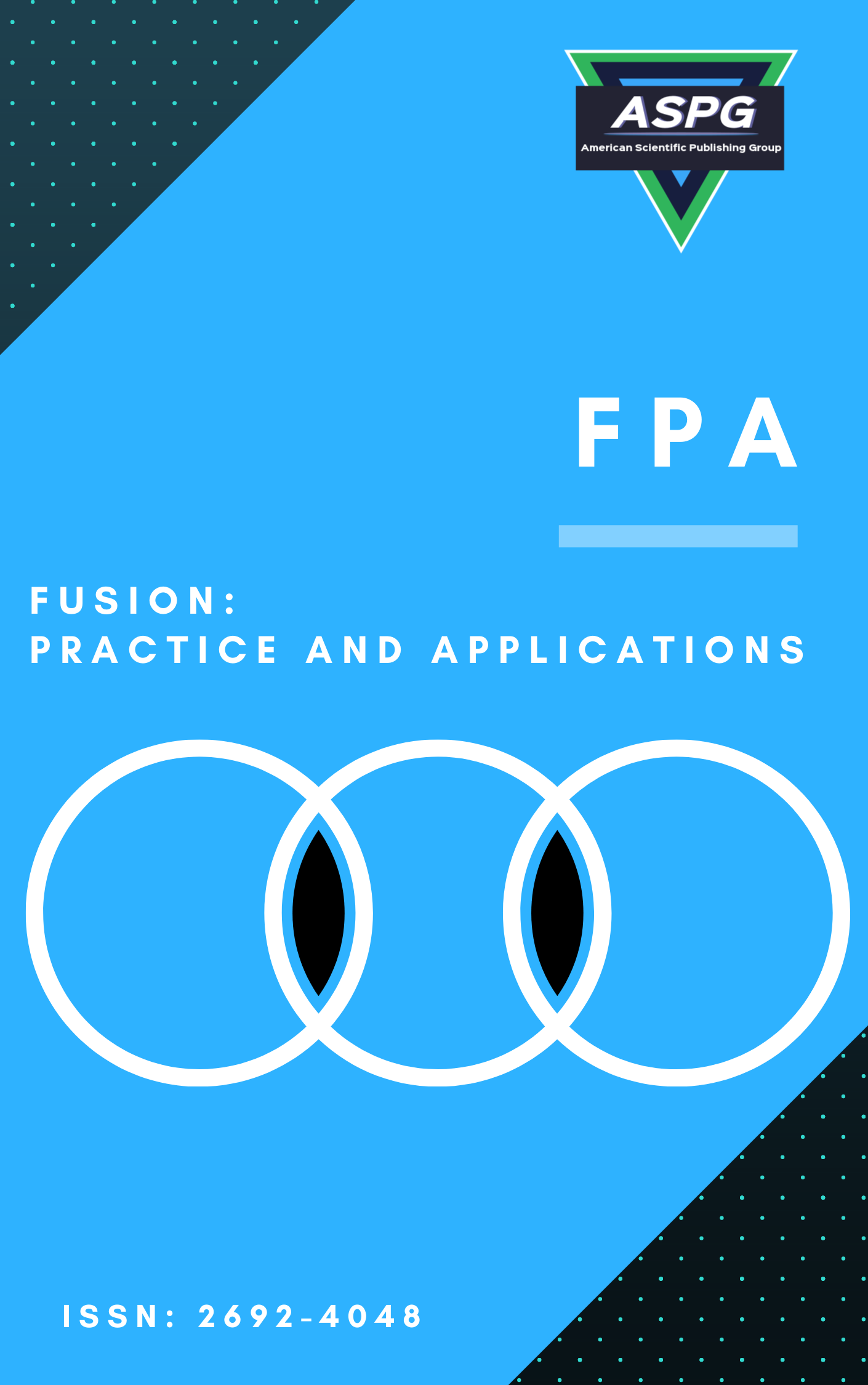

Volume 21 , Issue 1 , PP: 214-234, 2026 | Cite this article as | XML | Html | PDF | Full Length Article
Nilam Sachin Patil 1 * , E. Kannan 2
Doi: https://doi.org/10.54216/FPA.210116
Early and precise detection of corn leaf diseases is important for maintaining crop yield and quality. This work suggests a new end-to-end system Hybrid Adaptive Swarm-enhanced Vision Transformer (HAS-ViT) to overcome the limitations of current techniques such as poor accuracy, high computational expense, and overfitting and inefficient feature extraction. The suggested framework combines a three-stage pipeline such as segmentation, classification and optimization to overcome the issues. First, Adaptive Gradient Masking with Color Entropy (AGM-CE) is a novel segmentation technique that isolates diseased areas through an integration of local color entropy and gradient energy in the LAB color space. This guarantees accurate area selection and removal of the background. Then, a transformer model is constructed named Vision Transformer with Enhanced Visual Attention (ViT-EVA). It integrates depthwise attention layers as well as lesion-aware region concentration, enhancing separation of disease classes and model simplification. Finally, Adaptive Bio-Inspired Gradient Tuning (ABGT) optimizer integrates the Bat Algorithm, AdamW and gradient sign flipping for effective learning and convergence. The mechanism speeds up convergence, prevents local minima and maintains exploration exploitation trade-offs at training. The performance of proposed work is measured on a corn disease dataset and performs at 98.1% accuracy and 0.12 loss than conventional and current transformer-based models.
Corn Leaf Disease , Vision Transformer , Adaptive Swarm Optimization , Image Segmentation , Deep Learning
[1] A. Pfordt and S. Paulus, “A review on detection and differentiation of maize diseases and pests by imaging sensors,” Journal of Plant Diseases and Protection, vol. 132, no. 1, pp. 1-21, 2025.
[2] S. Behera, N. Padhy, R. Panigrahi, and S. K. Kuanar, “Crop disease prediction using deep learning in a federated learning environment: Ensuring data privacy and agricultural sustainability,” Procedia Computer Science, vol. 254, pp. 137-146, 2025.
[3] T. Tchokogoué, A. V. Noumsi, M. Atemkeng, and L. A. Fono, “Towards precision agriculture: A dataset for early detection of corn leaf pests,” Data in Brief, vol. 111394, 2025.
[4] S. O. Araújo, R. S. Peres, J. C. Ramalho, F. Lidon, and J. Barata, “Machine learning applications in agriculture: Current trends, challenges, and future perspectives,” Agronomy, vol. 13, no. 12, p. 2976, 2023.
[5] S. R. Goyal, V. S. Kulkarni, R. Choudhary, and R. Jain, “A comparative analysis of efficacy of machine learning techniques for disease detection in some economically important crops,” Crop Protection, vol. 190, p. 107093, 2025.
[6] Dataset collection (Kaggle). [Online]. Available: https://www.kaggle.com/datasets/unknown6874/corn-leaf-disease-dataset/data.
[7] F. Lu, H. Shangguan, Y. Yuan, Z. Yan, T. Yuan, Y. Yang, and Z. Yao, “LeafConvNeXt: Enhancing plant disease classification for the future of unmanned farming,” Computers and Electronics in Agriculture, vol. 233, p. 110165, 2025.
[8] X. Zou, Q. Wang, Y. Chen, J. Wang, S. Xu, Z. Zhu, and Y. Fu, “Fusion of convolutional neural network with XGBoost feature extraction for predicting multi-constituents in corn using near infrared spectroscopy,” Food Chemistry, vol. 463, p. 141053, 2025.
[9] V. Sharma, A. K. Tripathi, H. Mittal, and L. Nkenyereye, “SoyaTrans: A novel transformer model for fine-grained visual classification of soybean leaf disease diagnosis,” Expert Systems with Applications, vol. 260, p. 125385, 2025.
[10] F. O. Isinkaye, M. O. Olusanya, and A. A. Akinyelu, “A multi-class hybrid variational autoencoder and vision transformer model for enhanced plant disease identification,” Intelligent Systems with Applications, vol. 26, p. 200490, 2025.
[11] T. Jian, H. Qi, R. Chen, J. Jiang, G. Liang, and X. Luo, “Identification of tomato leaf diseases based on DGP-SNNet,” Crop Protection, vol. 187, p. 106975, 2025.
[12] P. Sharma, D. P. Sharma, and S. Bansal, “Optimum RBM encoded SVM model with ensemble feature extractor-based plant disease prediction,” Chemometrics and Intelligent Laboratory Systems, vol. 258, p. 105319, 2025.
[13] S. Padshetty, “A novel twin vision transformer framework for crop disease classification with deformable attention,” Biomedical Signal Processing and Control, vol. 105, p. 107551, 2025.
[14] G. Yilma, M. Dagne, M. K. Ahmed, and R. B. Bellam, “Attentive self-supervised contrastive learning (ASCL) for plant disease classification,” Results in Engineering, p. 103922, 2025.
[15] Z. Ren, F. Tian, S. Wang, and S. Chen, “Research on maize leaves surface action potential recognition method based on ResNet-18SE,” Smart Agricultural Technology, p. 100819, 2025.
[16] D. Jin, H. Yin, and Y. H. Gu, “Shuffle-PG: Lightweight feature extraction model for retrieving images of plant diseases and pests with deep metric learning,” Alexandria Engineering Journal, vol. 113, pp. 138-149, 2025.
[17] K. Anand, B. Jain, H. Mittal, and V. K. Yadav, “QEFS: A novel plant disease prediction approach using quantum-inspired evolutionary feature selection,” Applied Intelligence, vol. 55, no. 2, pp. 1-23, 2025.
[18] B. Tang, J. Zhou, C. Zhao, Y. Pan, Y. Lu, C. Liu, and X. Gu, “Using UAV-based multispectral images and CGS-YOLO algorithm to distinguish maize seeding from weed,” Artificial Intelligence in Agriculture, vol. 15, no. 2, pp. 162-181, 2025.